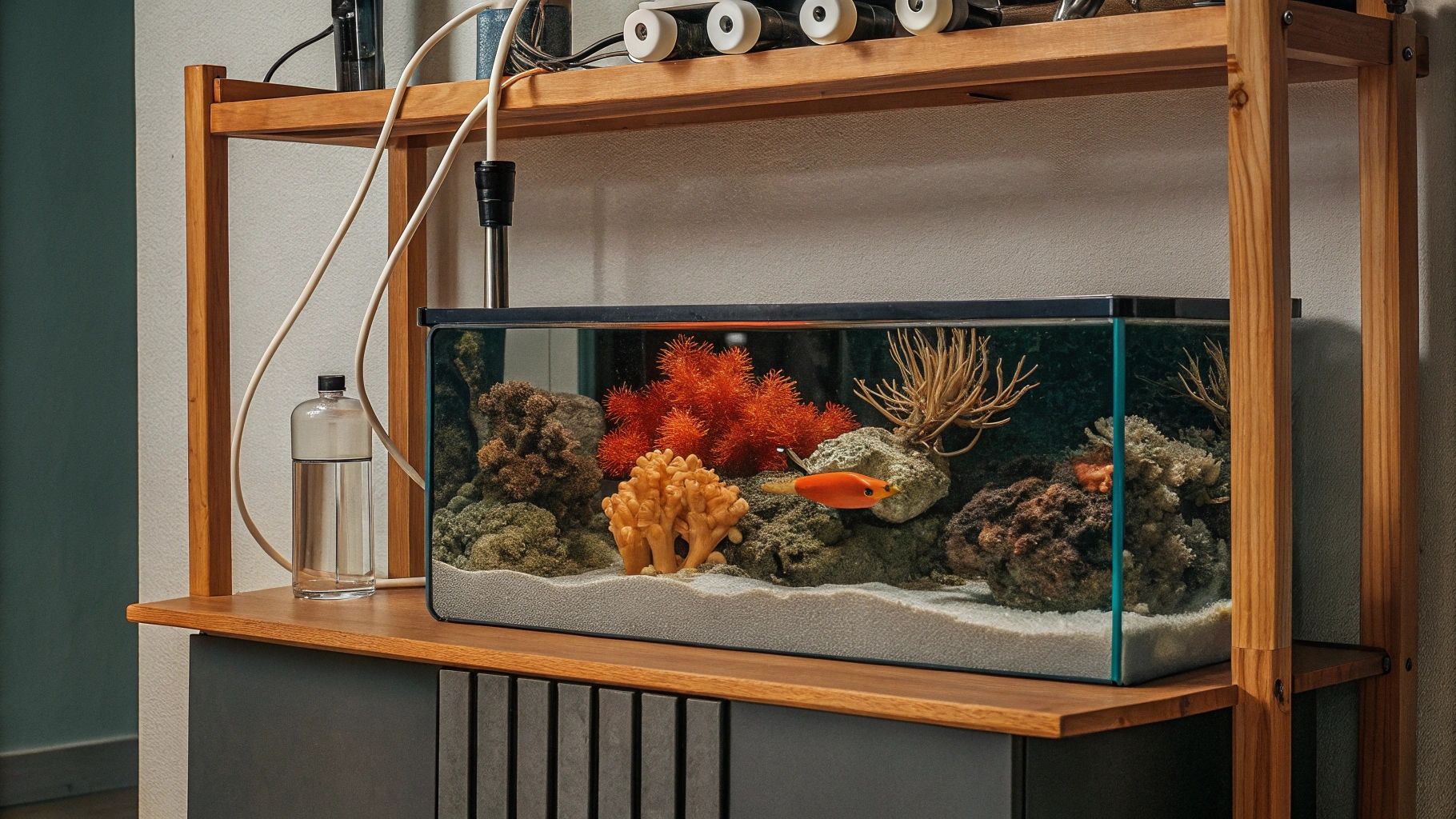
Essential Water Parameters for a Thriving Reef Tank
Maintaining a thriving reef tank requires more than just adding colorful corals and fish. Success hinges on mastering essential water parameters that directly affect coral health, fish vitality, and overall ecosystem balance. Neglecting these can quickly lead to stress, disease, or even mass coral bleaching. With the rise in reef aquarium hobbyists, understanding the science behind water chemistry has become critical. This article dives deep into the key parameters every reef enthusiast must monitor, backed by expert insights, scientific data, and practical tips.
Understanding Why Water Parameters Matter in Reef Aquariums
Water is the life force of any reef tank, but unlike a freshwater setup, marine systems demand precise chemical balances. Corals and reef organisms rely on stable conditions to perform photosynthesis, grow, and reproduce. According to a study published in Frontiers in Marine Science (2022), even minor fluctuations in parameters like calcium or alkalinity can reduce coral calcification rates by up to 25%. Therefore, reef aquariums mimic natural ocean conditions, making it vital to track parameters continuously.
Experts debate how often parameters should be tested. Some argue for daily monitoring, while others say weekly checks suffice if stability is maintained. However, most agree that consistent attention reduces risks of sudden die-offs or algae blooms.
Salinity: The Backbone of Reef Stability
Salinity influences everything from osmoregulation in fish to nutrient uptake in corals. The ideal specific gravity for most reef tanks ranges between 1.023 and 1.026. Values outside this can stress marine life and impair physiological functions. For instance, a sudden drop in salinity can lead to osmotic shock, which many corals cannot survive.
Some hobbyists use refractometers for accuracy, as hydrometers often give fluctuating readings. Additionally, water evaporation can increase salinity over time, so topping off tanks with fresh RO/DI water is standard practice. The Marine Aquarium Societies of North America (MASNA) highlights that maintaining salinity within this range ensures the delicate balance reef aquariums require.
Temperature: The Silent Threat to Coral Health
Temperature impacts metabolic rates and symbiotic algae functioning within corals. The sweet spot usually lies between 76°F and 82°F (24-28°C). Temperatures above 82°F can accelerate metabolism but cause stress, leading to bleaching events. Conversely, temperatures below 76°F slow biological processes, reducing coral growth.
According to NOAA, coral bleaching has become increasingly frequent due to rising ocean temperatures. Reef tank owners face similar challenges when equipment malfunctions or room temperature varies drastically. Investing in reliable heaters and chillers prevents these risks.
pH: Maintaining the Ocean’s Natural Buffer
The pH level in a reef aquarium must mimic natural seawater, ideally between 8.1 and 8.4. Fluctuations outside this range hinder coral calcification and can disrupt biological filtration. Low pH can make calcium less available, while high pH may cause precipitation of vital minerals.
Many aquarists use buffering agents to stabilize pH. However, overuse can cause sudden swings, which are even more harmful than steady values outside the norm. Testing kits with high accuracy or digital probes are recommended for precision. The Coral Reef Alliance explains that maintaining stable pH supports healthy reef growth and microbial balance.

Alkalinity: The Unsung Hero of Reef Chemistry
Alkalinity measures the water’s capacity to neutralize acids and is critical for coral skeleton formation. Reef tanks generally require alkalinity between 7-12 dKH (125-215 ppm as CaCO3). Maintaining alkalinity within this range prevents pH crashes and supports steady calcium uptake.
A survey by Reef Builders shows that many reef keepers fail to maintain proper alkalinity, leading to slow coral growth or skeleton deformities. Therefore, regular dosing with alkalinity buffers and continuous monitoring are essential. Many professionals recommend automated dosing systems for stable levels, especially in larger reef aquariums.
Calcium: Building Blocks for Coral Skeletons
Calcium is indispensable for coral growth. The target level typically ranges from 400 to 450 ppm. When calcium dips below this threshold, corals struggle to deposit their skeletons, weakening their structure and growth rate.
However, excessive calcium can cause precipitation, reducing water clarity and clogging filtration. Striking the right balance often means dosing calcium supplements carefully, alongside alkalinity. Reef Central forums and studies confirm that keeping calcium steady enhances coral coloration and resilience.
Magnesium: The Balancing Act
Magnesium plays a supportive role in maintaining calcium and alkalinity balance. Levels between 1250-1350 ppm are optimal. Magnesium prevents calcium carbonate from precipitating out of the water, ensuring these elements remain bioavailable.
Many aquarists overlook magnesium until an imbalance manifests as poor coral growth or pH instability. Including magnesium testing in routine water checks rounds out a comprehensive water parameter maintenance strategy.
Nitrate and Phosphate: Controlling Nutrient Pollution
Nitrate and phosphate are nutrients that fuel algae growth but become toxic in high amounts. Reef tanks should keep nitrate below 5 ppm and phosphate under 0.03 ppm to avoid algae outbreaks and coral stress.
Excess nutrients often come from overfeeding or inadequate filtration. Advanced methods like protein skimmers, refugiums, or phosphate reactors help maintain low nutrient levels. According to Marine Conservation Society reports, unchecked nitrates and phosphates significantly degrade reef health.
Real Solutions to Maintain Essential Water Parameters
- Invest in reliable test kits or digital probes for continuous monitoring.
- Use automated dosing systems for calcium, alkalinity, and magnesium.
- Perform regular water changes with high-quality synthetic seawater to reset parameters.
- Avoid overfeeding and maintain efficient filtration to control nitrates and phosphates.
- Monitor temperature with heaters and chillers and use timers to stabilize lighting cycles.
Featured Snippet: What Are the Essential Water Parameters for a Thriving Reef Tank?
To keep a reef tank thriving, monitor salinity (1.023-1.026 specific gravity), temperature (76°F-82°F), pH (8.1-8.4), alkalinity (7-12 dKH), calcium (400-450 ppm), magnesium (1250-1350 ppm), nitrate (<5 ppm), and phosphate (<0.03 ppm). Maintaining these levels mimics natural ocean conditions, promoting coral growth and fish health. Using precise testing methods, consistent dosing, and filtration control ensures a stable environment. Expert hobbyists emphasize that stability matters more than hitting perfect numbers, as corals respond best to gradual changes.
Frequently Asked Questions
- How often should I test water parameters in a reef tank?
Testing weekly is sufficient if the tank is stable, but new tanks or those with sensitive corals require more frequent checks. - Can I use tap water for reef tanks?
No, tap water contains impurities. Always use reverse osmosis/deionized (RO/DI) water for mixing saltwater. - What is the best way to raise calcium levels?
Use calcium supplements or dosing systems designed for reef aquariums; avoid overcorrection to prevent precipitation. - Why is alkalinity important in a reef aquarium?
Alkalinity stabilizes pH and supports coral skeleton growth by buffering acids naturally produced in the tank. - How do I control nitrates and phosphates effectively?
Use protein skimmers, refugiums, and avoid overfeeding. Regular water changes also help reduce these nutrients. - What happens if pH fluctuates frequently?
Fluctuations stress corals and fish, reducing growth and making the tank prone to algae outbreaks and disease. - Are automated dosing systems worth the investment?
Yes, especially for advanced reef aquariums. They maintain steady levels, reduce manual errors, and improve coral health.
Final Thought
Mastering essential water parameters for a thriving reef tank demands patience, precision, and continuous learning. Reef aquariums provide unmatched beauty but require science-backed care to flourish. Focus on stability rather than chasing perfect numbers, and embrace a routine testing and dosing schedule. By maintaining salinity, temperature, pH, alkalinity, calcium, magnesium, and nutrient levels within ideal ranges, you create a sanctuary where corals and fish thrive naturally. Whether you are a beginner or a seasoned hobbyist, these insights will help you unlock vibrant, resilient reefs for years to come.
Read More:
How to Grow Beneficial Bacteria in Aquarium: A Healthy Tank
Ultimate Aquatic Invertebrates Care Guide: Essential Tips for a Thriving Habitat






